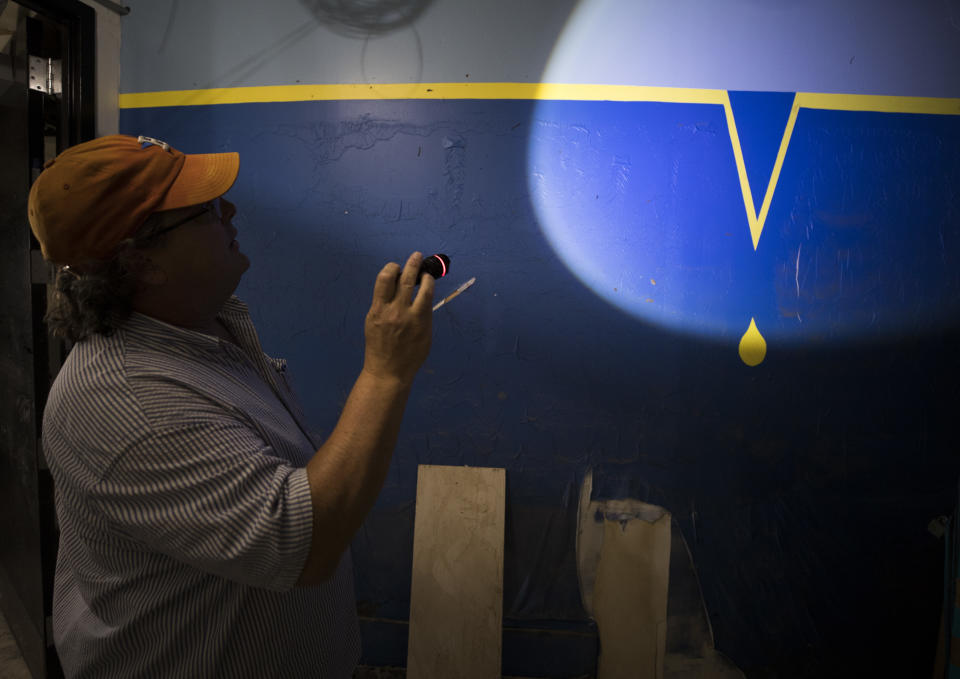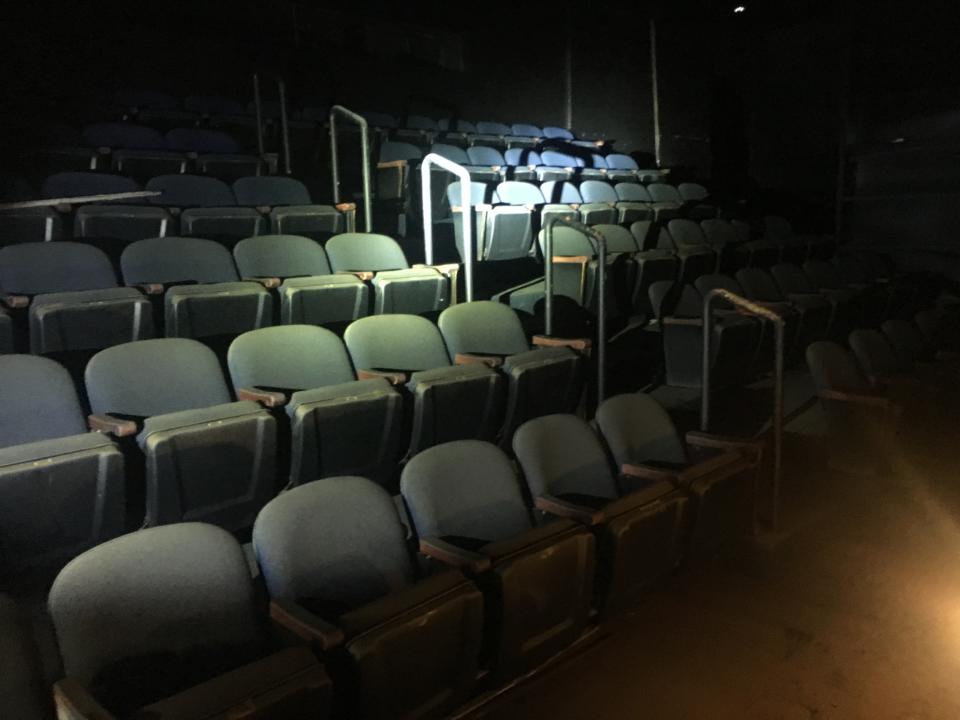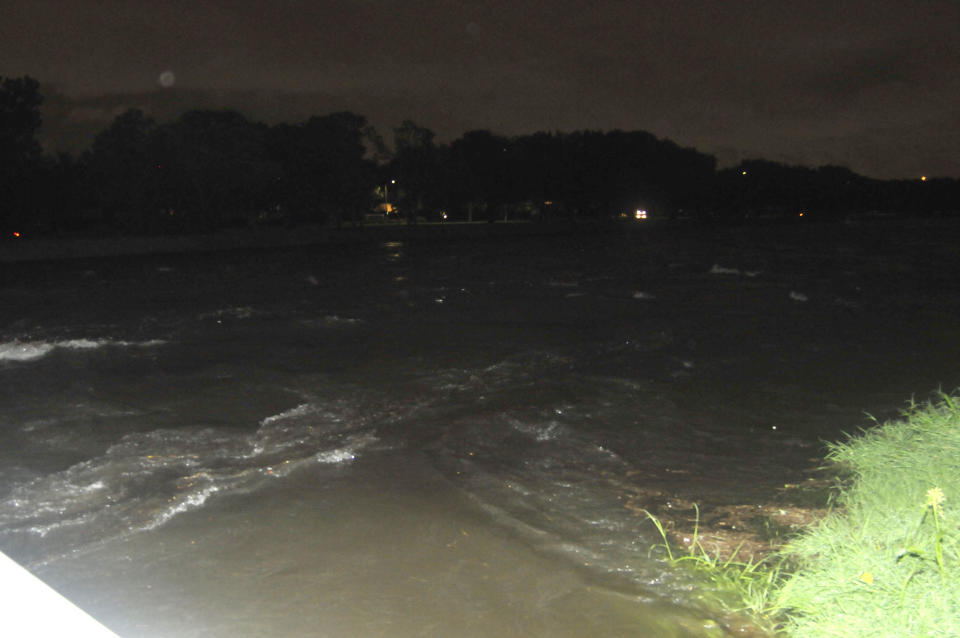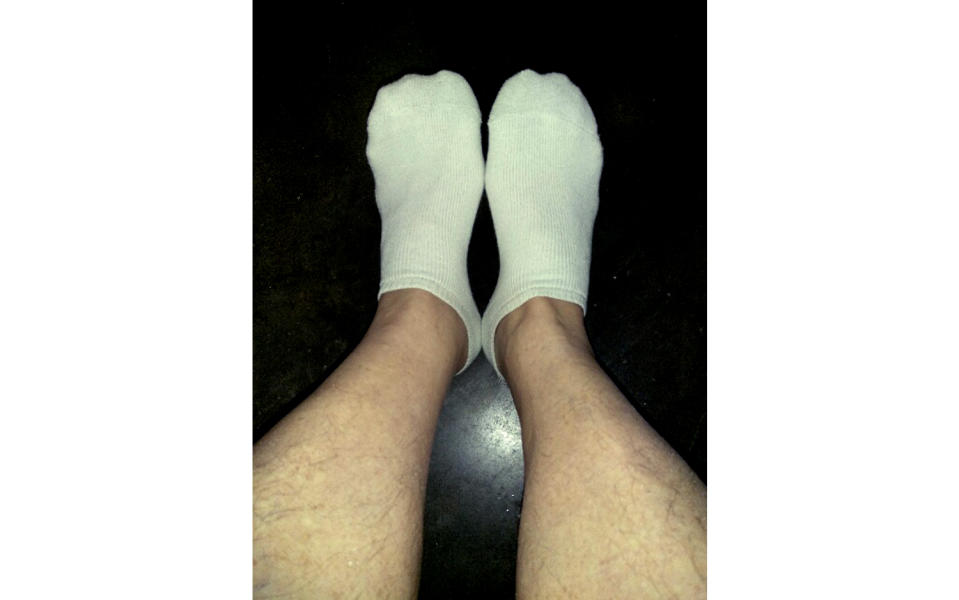Houston's historic Alley Theatre is flooded but unbowed

It was a clear decision: Even before the 10 feet of water receded from the historic Alley Theatre in the flooded Houston arts district downtown; before space was found on a recently emptied office floor so that actors could rehearse; before 70 years of priceless accumulated props — thousands of pieces of china, furnishings, chandeliers, dolls, set knickknacks — were catalogued for insurance and then trashed; before the search began for temporary space on which to stage a world premiere just two weeks from the day Harvey dumped the most water ever on this Bayou City; before they rolled up their sleeves or began to grieve; before they helped co-workers haul Sheetrock from their ruined homes or worried over the cats that another had to leave behind in the flood — even before some of them saw the damage firsthand — those who run the Alley were determined that the show would go on.
“We are about producing theater, and that has been our contribution to this community for 70 years,” said Dean Gladden, the Alley’s managing director. “We think the best thing we can do to show that we can overcome all these obstacles is to produce theater and celebrate that we can do that.”
The Alley is more than just a theater to Houston. Established 68 years ago, and nearly destroyed once in the floods after Tropical Storm Allison in 2001, it has long embodied the city’s cultural ambitions. Houston has built bigger, flashier halls since the Alley’s creation in the 1940s — literally in an alley – but it developed a reputation for presenting original and daring works by such writers as Tony Kushner and Paula Vogel, and quickly became the place where American actors and writers wanted their regional-theater debuts. It was Houston’s first claim on sophistication, proof it was more than the oil-and-cattle hick town that outsiders imagined. Eventually there would also be the world-famous Menil Collection; and a sprawling Museum of Fine Arts campus designed by Mies van der Rohe, Isamu Noguchi and Rafael Moneo; and newly refurbished parks designed by a host of nationally known landscape artists. But the Alley was always proudly ahead of the pack.
And of all Houston’s cultural institutions, the Alley was the one most damaged when 51 inches of water fell between Aug. 26 and 29 during Hurricane Harvey. The damage was all the more disheartening because it came a year after the completion of a $46.5 million renovation project. To look at what it has taken to repair the Alley so far, and at what it will take in the months, even years, to come, is to look at not just this one theater but an entire city — and perhaps foresee the choices being faced in other cities that will have to decide what is worth rebuilding, and why.
***
Rajiv Joseph was the first to see the literal depths of the problem. The playwright’s latest work, “Describe the Night” was scheduled to premiere at the Alley on Sept. 15, and he was in town from New York to prepare. Rehearsals had continued as Harvey approached, but they paused as the rains began in force.

During a break in the deluge on the night of Saturday, Aug. 26, he walked from his hotel, which was blocks from the theater, but was stopped just short on Texas Avenue because the street had turned into a river that would reach a depth of 8 feet. Beneath the banner heralding his coming play, water lapped halfway up the staircase to the entrance. The building houses two stages, one upstairs and one downstairs. Joseph’s play was to go in the 300-seat one downstairs.
“I assumed it was over,” he said.
Joseph took a video of the scene on his phone and uploaded it onto the private Facebook page set up so that the Alley’s staff of 180 could communicate after their email stopped working. But that was all anyone saw until Monday, when Gladden and general manager Ten Eyck Swackhamer reached the theater in a truck by way of side streets and led a small group into the building. Wearing clothes they expected to throw away later, they found the staircase to the lower theater completely underwater. They could see the tops of seats poking through the muck.
Walking in another direction, where the water had already receded, they found the bright yellow line that had been painted on the wall to mark where the water had reached after Tropical Storm Allison. That was about 8 feet from the floor, and the smudges of mud that were Harvey’s calling card showed that this flood had gone about 18 inches higher still.
Yes, they had put in precautions after Allison. There were submarine doors, and they had worked, holding even as the water pushed from outside. But this deluge had come up through the floors, with such force that it literally moved the walls. The electrical vault room is separated from the rest of the basement by a cinderblock wall, reinforced with concrete and rebar, designed to withstand a full-on fire for three hours. The space filled with water and the wall crumbled into the room.
“Water is unforgiving and it is unrelenting,” Swackhamer said. “It’s a primal force, and you have to respect that.”
Much of what was underwater was newly built in the most recent renovation — prop storage, dressing rooms, bathrooms, a wig room, laundry. Gladden estimates that there is at least $15 million in damage, but only $3 million in insurance on the building and $4 million on the contents.

By Wednesday, the pump-out had begun, and as the water left, the reality — illuminated by generator-powered lamps because the electricity was out and predicted to be for weeks — set in. Chunks of ceilings had plopped onto the floors. Mold was beginning to grow on the upholstered seats. The stench was a mix of kerosene, rotting playbills, sewage and swamp water. There was a slippery coating everywhere, a mix of laundry detergent and oil. “Now I know why they have open-casket funerals,” said properties master Karin Rabe. “I know how terrible that sounds, but this was like death, and seeing it made it real.”
Most poignant, she said, were not the things that were upended — heavy machinery, a piano — but those that remained upright. A champagne glass, filled with water, as if waiting for a toast. The books from the set of “Freud’s Last Session” still lined up on a shelf. A soup tureen lying on a blanket where it had come to rest.
“Hi Penguin!” she said as she walked from room to room, spotting a statue of a tuxedoed bird that played a role in “The Man Who Came to Dinner.” “Oooh, there’s our soldier,” she said, of one of the central plot point statues from “And Then There Were None,” which (secret tradition alert) the props department found a way to hide in the set of every other mystery production since then.
She was moved to tears by the sight of a doll, made of plastic but designed to resemble porcelain, wearing a delicate silk Victorian-era dress. The Alley’s signature production is the yearly reprise of “A Christmas Carol”; in their version, Scrooge visits three shop owners demanding payment of a debt, and when they do not have the money, he grabs merchandise instead. Later, each of those items transforms into a visiting spirit; this doll becomes the Ghost of Christmas Past. And now it lay on a shelf, ruined by sludge, seemingly sleeping.

***
Payroll manager Stan Irish wasn’t focused on the Alley on Saturday night into Sunday. He was in his home of 36 years, which is a few blocks away from Braes Bayou near the Astrodome, a house that had weathered the worst of Houston’s storms — Allison, Hurricane Alicia — and “never once had water even close to the front door,” he said.
An app on his phone tracked the water levels in the bayou, and when he went to sleep Saturday night, the water was 2.48 inches over the banks. When he woke at 2 a.m. and checked, it was 6 inches, and at 4 a.m. it was 16. An hour later, he walked to the kitchen barefoot in the dark, and he stepped in something wet. At first he thought that one of his two elderly cats, frightened by the storm, had vomited, but then he realized that the dampness was not just below his foot but above it.
Turning on the light, he saw water coming through the floorboards.
Within 30 minutes, the water was up to midcalf, and by 9 a.m. it had reached his knees. “And I am 6-foot-1,” he said.
The power soon went out, and when the 911 operator could only promise to “put us on a list,” Irish and his partner, Jeffrey, decided that they had to save their own lives. They filled plastic bags with necessities and put those in a plastic-lined backpack and made the “wrenching” decision to leave their cats Cinco and Ike (so-named because Irish found him in the backyard after that hurricane). “Where would we balance a 17-pound cat when you are chest-deep in floodwaters?” he said, still feeling guilt over his choice.
Their destination was the St. Luke’s Presbyterian church seven blocks away. “My late mother was sitting on my shoulder,” said Irish, 65. “She told me when I was a boy that ‘if anything happens and I’m not there, you can always go to the church; the church is a safe place.’”
They almost didn’t make it. The water was swirling, and one misstep would have likely meant that they would have gone under, Irish recalled. “I was born on Galveston Island, and I know what a riptide is, I know how currents work. This is unlike anything I have ever felt. This was a pull and a suck.”
They passed a playground on a small rise and saw, like an apparition, a young couple blithely sitting on swings. The pair (their names were Missy and Kyle; Irish wishes he’d gotten their last names) took the heavy backpacks and waded with them the rest of the way to the church.

Soon a Red Cross helicopter landed in the parking lot and flew the gathered group of about two dozen to the shelter at the George R. Brown Convention Center. Once checked in and dried off, Irish found that all he wanted was news of his cats, news of the Alley and a pair of warm socks. The first was impossible to get. The second was on the Alley staff’s Facebook page, the video posted by Rajiv Joseph. And the socks? All that was left on the donation table was a pair of women’s, in a size 10, “so I stretched them and made them fit my man-size triple-wide size 10.5 feet.” Then he took a photo and posted it to Facebook.
The next morning, he woke up on his cot to find that the wife of one of his employees had driven to the Convention Center “through rain that was still blowing sideways” to bring him two pairs of her husband’s socks, one white and one mismatched white and blue, because they were the only ones that were clean. They made him “as happy as anything I have ever worn,” he said. The day after that, friends offered him and Jeffrey use of their spare room, where they would live for more than a week.
As soon as his app showed that the bayou waters had receded, Irish headed back home, opened the door, and called for his cats. “They’re alive, they’re alive!” he shouted to Jeffrey, as Cinco and Ike came running. “Cats are incredible animals,” he said. “They know how to climb high and stay high.”

One thing he could not do was his job. Every Thursday, Irish has made sure that paychecks were deposited in employees’ accounts, in accordance with Equity rules that say actors must be paid weekly. Because there was no electricity at the office, a member of the IT department carried the server out, and the president of the board of directors drove it to the IT director’s house, where he set it up in his bedroom. Then he located the payment file, changed the date, and uploaded it to local banks.
“By golly, I checked my account, and there was my money, as scheduled,” Irish said. “No one missed being paid.”
***
Where to put the staff? The stuff? The play itself?
Those were the questions facing the Alley’s leaders once the water was pumped out. The theater building would be unusable for several months. The office building next door was dry because it had been built above a parking garage but had no electricity because the power company’s electrical vault was in the basement and would not be functional for weeks.

The first step was to find rehearsal space. Rehearsals were underway not only for “Describe the Night,” which was scheduled to open on Sept. 15, but also for “Cleo,” a new play by Pulitzer Prize-winning Texas journalist Lawrence Wright. That play, about the scandalous affair between Elizabeth Taylor and Richard Burton while making the movie “Cleopatra,” was scheduled to begin previews on Sept. 29. For a few days, the casts used conference rooms in a nearby hotel to rehearse. Then a board member who had just moved his oil shipping company out of a 55th-floor penthouse in a downtown office building offered up that empty space. Rehearsals continued against a backdrop of expansive views. “I feel like some downtown oil executive,” Wright joked. “It’s a new feeling.”
Office staff, meanwhile, was moved to separate space donated by a local nonprofit. And the scenery shop relocated to a warehouse outside of town. To get all the computers, costumes, office supplies and scenery into new locations meant scheduling departments in shifts all day Friday — with employees walking up and down the stairs carrying everything to waiting trucks.
During all this, both Wright and Joseph kept expecting to hear that their shows would be canceled. “I assumed they would conclude they just couldn’t stage a production two weeks after this immense catastrophe, and I would soon be on a plane back home,” Joseph said.
Instead, Gladden and Swackhamer told Joseph that they had found space at a black box theater at the University of Houston, where the Alley had relocated two years ago during the now-ruined renovations. It was not a perfect setup. There were only 185 seats, and tickets had been sold for 300 at the Alley. The sets would have to be completely redesigned because the original location was a theater-in-the-round, which would not be possible in this space. But the play, which Joseph described as “the most ambitious thing I’ve written, a very big step for me and my playwriting,” would be seen.
For Wright, the news was more complicated. All the other theaters in the city were either booked or damaged. Loath to wait a full season to stage “Cleo” — that would feel like defeat, they said — Gladden and Swackhamer moved the spring schedule around and created a window for the show. As a result, the Alley will aim to mount five main-stage productions between Christmas and next summer. “That’s a lot of work to cram into six months,” Swackhamer said. “The fight against Harvey will continue for our production crews for the rest of the season.”

Speaking of Christmas, the audience favorite “A Christmas Carol” will include its iconic Doll of Christmas Past. Fearing she would wind up in the trash bin as the staff ruthlessly purged anything that had been touched by floodwaters, Gladden rescued her and brought her to his home. “I wanted to save her as a symbolic survivor of the hurricane and display her for posterity,” he said. “She is now dried out and has a smile on her face.”
***
Why is it so important to put on a play? Why rebuild in a spot that has now flooded twice? Why raise millions for a theater when property damage estimates throughout the city are $75 billion? Why this determination — this desperation — that the show go on?
“I had the same question,” Joseph said. “When they told me they had a space, I was elated, but there was a moment where I thought, the devastation here is so extreme and so many people are worrying about their own survival, should we be doing this? But I took the lead of the Alley. They said, ‘We need to get back to work; this is what we do — we put on plays.”
To run from water is to run from reality, Swackhamer said. “We’ve had a 500-year flood and a 1,000-year flood within 15 years,” he said. “We are going to see water in the city of Houston; it’s just going to happen. We’ll build against it, but there are just no guarantees.”
There is only one thing they can control, he and his colleagues say, so they are seizing that.
“I think it’s important to show the city and the nation that arts are resilient, arts matter, people care about what we do,” Swackhamer said. “They will be able to go and see a play and start having some normalcy in their lives.” The weekend after Harvey, he noted, the Astros played two games that were sold out. “Over 30,000 people came, even though transportation was down, even though it was tough sledding. People wanted something normal.”

Back at his desk, albeit a temporary one in an unfamiliar building, Irish agreed. Perhaps the worst-hit of the entire staff — two completely lost their homes, dozens more lost cars and scores are still repairing partial damage — he cries as he describes what it has meant to him to get back to work, to produce the payroll, as usual, this week.
One co-worker “wrote me a check for a sum of money that staggered me,” he said. “People gave me gift cards; I found a bag of clothes at my desk one day. Today someone left me 10 pairs of socks.
“I am going to survive through the grace of the fates, the strength of my partner, the will that was inborn in me from my mother … and, truly, my Alley family,” he said. And the reason he is working to make the show go on is because he wants to somehow give to an audience a little piece of what that work family has given to him.
“The show must go on because that’s what we love, that’s what we do,” he said. “Water is a pretty strong force, and it goes pretty much where it wants to. But there isn’t anything like a group of theater people who want to put on a show, because stand out of the way, they’ll make it happen.”
_____
Read more from Yahoo News:
Senior citizens in viral photo pose after rescue from Harvey floodwaters
‘We’re alive’: Texas woman describes what matters to her after fleeing Harvey’s floodwaters
Animal lover rescues bats trapped under bridge by Hurricane Harvey
Photos: ‘Catastrophe Unfolds’: How newspapers covered Harvey
Photos: Explosions Victims of Harvey return to clean up their water-damaged homes
Photos: Dramatic aerial views of the flooding in Harvey’s aftermath
Photos: Explosions rock Harvey-flooded Arkema chemical plant in Crosby, Texas

